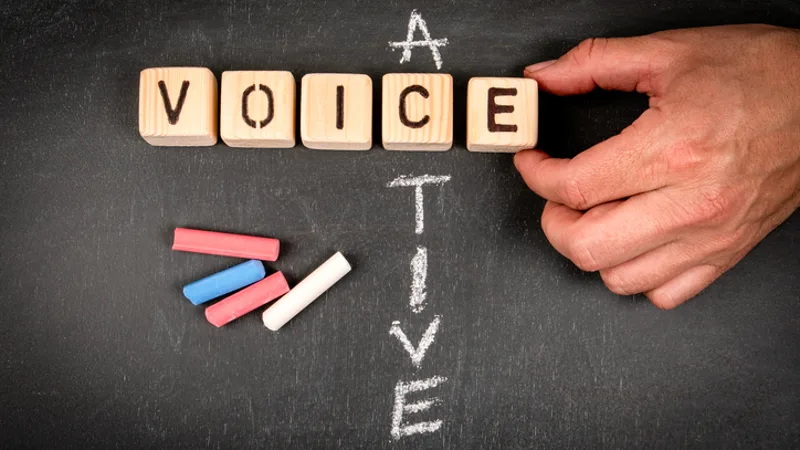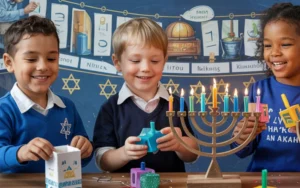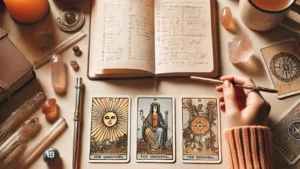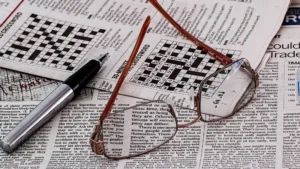Creating Your Own Crossword Puzzles: A Comprehensive Tutorial
Crossword puzzles have long been a favorite pastime for many, offering a unique blend of challenge and entertainment. Creating your own crossword puzzle can be a rewarding experience, whether you’re an educator looking for a fun learning tool, a hobbyist seeking a creative outlet, or a business owner wanting to engage your audience. While this article covers the basic steps, we will delve deeper into advanced techniques, case studies, and interactive examples to elevate your crossword puzzle-making skills to the next level.
Why Create Your Own Crossword Puzzles?
Creating your own crossword puzzles allows you to tailor content to specific themes, interests, or educational needs. It’s a great way to exercise your brain, enhance vocabulary, and even teach complex concepts in a fun and engaging way.
Case Study: Using Crossword Puzzles in Education
Mrs. Johnson, a high school history teacher, noticed her students were struggling to remember key historical dates and figures. To make learning more engaging, she started creating custom crossword puzzles that included important events, dates, and names. The students not only enjoyed solving the puzzles but also found that their retention of information improved significantly. Mrs. Johnson’s creative approach turned a mundane review session into an interactive and enjoyable learning experience.
Basic Steps for Creating a Crossword Puzzle
- Choose a Theme: Start by deciding on a theme for your crossword puzzle. This could be anything from vocabulary words related to a specific subject, popular culture references, or even personal interests.
- Create a Word List: Once you have a theme, compile a list of words related to it. Make sure to include words of varying lengths and complexity to make the puzzle interesting.
- Design the Grid: Choose a grid size that fits the number of words you have. Common sizes include 15×15 or 21×21 squares for standard puzzles, but you can customize this based on your needs.
- Place Words on the Grid: Start with the longest word and place it in the center of the grid. Gradually add other words, ensuring they intersect correctly. This process requires patience and creativity.
- Create Clues: Write clues for each word. Aim for a mix of straightforward and cryptic clues to cater to different skill levels.
- Test and Refine: Solve the puzzle yourself or have someone else test it to ensure there are no errors or overly ambiguous clues.
Advanced Tips for Crafting Engaging Crossword Puzzles
- Incorporate Themed Clues and Answers: To make your crossword puzzle more engaging, try to include clues and answers that are closely related to the theme. For example, if your theme is “Classic Literature,” use character names, famous quotes, and literary terms.
- Use Puns and Wordplay: Incorporating puns and wordplay can add an extra layer of fun to your puzzles. For instance, if your clue is “Place for a pen,” the answer could be “Pigsty” instead of “Desk.”
- Balance Difficulty Levels: Include a mix of easy, medium, and difficult clues. This keeps the puzzle accessible to beginners while still challenging for more experienced solvers.
- Include Multi-Word Answers: Adding phrases or multi-word answers can make your puzzle more interesting. For example, instead of using the single word “Raincoat,” use the phrase “Waterproof Jacket.”
- Vary Grid Patterns: While standard grids are usually square, don’t be afraid to experiment with different shapes, especially if your puzzle is themed. For example, a puzzle themed around Christmas could have a tree-shaped grid.
- Utilize Crossword Puzzle Software: Tools like Crossword Compiler and Puzzle Maker can simplify the process, especially for complex puzzles. They offer features like automatic word placement and grid customization.
Real-Life Application: Creating Crosswords for Marketing
Businesses are increasingly using crossword puzzles as a creative marketing tool. For instance, a bookstore might create a crossword featuring clues about famous authors or books they sell. This not only engages customers but also subtly promotes products.
Case Study: Crosswords as a Marketing Strategy
“Books & Brews,” a small independent bookstore, wanted to increase foot traffic and engage with their local community. They created a monthly crossword puzzle featuring book titles, authors, and literary terms. Customers who completed the puzzle correctly were entered into a raffle to win a free book. This initiative not only brought more customers into the store but also fostered a sense of community among book lovers.
Interactive Puzzle Example: Try It Yourself!
Here’s a mini crossword puzzle for you to try. The theme is “Healthy Living.”
Clues:
- Down: A place where you can work out (7 letters)
- Across: Essential nutrient found in fruits (6 letters)
- Down: Practice of mindfulness and breath control (5 letters)
- Across: Type of exercise that improves flexibility (7 letters)
Answers:
- Down: Gymnasium
- Across: Vitamin
- Down: Yoga
- Across: Stretch
Creating interactive content like this not only makes the article more engaging but also provides readers with a practical experience.
Creating Crosswords with Online Tools: A Step-by-Step Guide
- Select a Tool: Choose an online crossword puzzle maker such as Crossword Labs, PuzzleFast, or EclipseCrossword.
- Input Your Word List and Clues: Enter your word list and clues into the tool. Most tools will automatically generate a grid based on your input.
- Customize the Grid: Adjust the size, shape, and design of your grid as needed. Many tools offer options for unique shapes and patterns.
- Preview and Edit: Review the puzzle to ensure all words fit correctly and there are no overlaps or errors. Make any necessary adjustments.
- Export and Share: Once you’re satisfied, export your puzzle as a PDF or image. You can share it digitally or print copies for distribution.
Creating a Crossword Puzzle for Educational Use
Crossword puzzles can be a powerful educational tool. Here’s how you can create one for a classroom setting:
- Choose a Learning Objective: Decide what you want your students to learn, such as vocabulary from a specific chapter or historical facts.
- Compile a List of Terms: Create a list of key terms and concepts related to the lesson.
- Design the Puzzle with Your Students in Mind: Make sure the difficulty level is appropriate for your students. Include hints that are related to what they have learned in class.
- Incorporate Multimedia: For a more interactive experience, include QR codes in the clues that link to videos or articles. This encourages students to engage with additional learning resources.
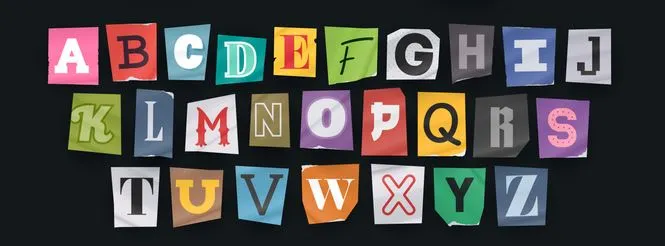
Final Thoughts: The Joy of Creating Crosswords
Creating your own crossword puzzles is not only a fun and creative endeavor but also a great way to engage others, whether it’s for educational purposes, marketing, or simply for entertainment. By incorporating advanced techniques, thematic content, and interactive elements, you can elevate your puzzles from basic to brilliant.
Challenge Yourself! Try creating a crossword puzzle based on a theme you’re passionate about. Share it with friends or family and see how they fare. The joy of watching others solve your creation is immensely rewarding.
Interactive Content Idea: Consider adding a downloadable template or a link to an online crossword puzzle platform where readers can create their own puzzles directly from your site. This interactive feature can increase engagement and time spent on your page, which is beneficial for SEO and Adsense approval.
By following these tips and incorporating unique elements into your crossword puzzles, you’ll not only create engaging content but also provide a richer experience for your audience.

